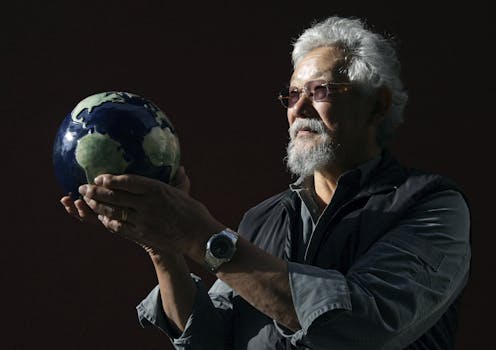Blending Western science with Indigenous knowledges, David Suzuki's bestseller The Sacred Balance has been updated for this moment
- Written by Jana Norman, Alfred Deakin Postdoctoral Research Fellow, Deakin University

In an occasional series, we look at books that have become cultural touchstones.
Canadian scientist, author, and environmental activist David Suzuki[1] knows firsthand the power of books. Speaking in Adelaide in 2016[2], he testified to the life-changing effects of Rachel Carson’s Silent Spring[3], saying it “impelled” him to join “millions of people around the world in what we now see was a modern environmental movement”.
Suzuki, now 87, may be one among millions active in today’s environmental movement, but he is one in a million. As Tim Flannery[4] puts it, he is “the greatest environmentalist of our age”.
Suzuki’s influence is decades deep, world-wide and much celebrated. A former professor of genetics, he has written or co-authored over 50 books, including 19 for children, and received awards, accolades and 29 honorary degrees. In 1990, Suzuki and his wife Tara Cullis co-founded a foundation[5] to do research, policy work and public engagement on climate solutions, sustainable communities and protecting and restoring nature. This year, he retires after 43 years hosting Canadian science education program, The Nature of Things[6].

















